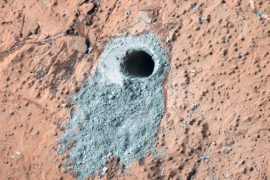What is Edwards Plateau?
The Edwards Plateau
is an area of west-central Texas which is bordered by the Balcones Fault towards the south and the east, the Llano Uplift and the Llano Estacado towards the north, and the Chihuahuan Desert and Pecos River towards the west. San Angelo, San Antonia, Del Rio, and Austin make a rough outline of the area. The eastern part of the plateau is the Texas Hill Country.
The trees of this savanna include a juniper-oak mix and a mesquite-acacia mix scattered over the fairly short grasses, which were traditionally affected by droughts and regular fires. Some pecan trees are found nearby the springs and rivers. The Balcones Fault is associated with the Edwards Plateau formation. This fault line is an ecological demarcation fro the range definition of numerous species.
Caves of the Edwards Plateau are significant habitat for much of the wildlife. The region hosts some of the largest colonies of bats in the world, including millions of Mexican free-tailed bats. The biggest colony of these inhabits Bracken Cave nearby San Antonia, while the Congress Avenue Bridge located in Austin is the summer home for over half a million and is the largest bat colony anywhere within an urban area. There are also a number of birds and reptiles including breeding populations of the Texan endemic golden-cheeked warbler.
–
Almost the entire natural habitat of the plateau has been transformed into ranchland, farmland, or urban areas, such as
- San Antonio
- Austin
with only about 2 percent remaining in scattered pieced, particularly to the east of the plateau. Further altering of the savanna has incurred though the encroachment of shrubs now that grassland fires are carefully controlled. Little areas of intact habitation remain, especially around Austin, where the areas are protected, such as the Balcones Canyonlands National Wildlife Refuge. Another significant region for wildlife is the Fort Hood military base.
Image Caption: Balcones Escarpment and Edwards Plateau in Texas. Credit: Left Hook/Wikipedia
News coming your way












